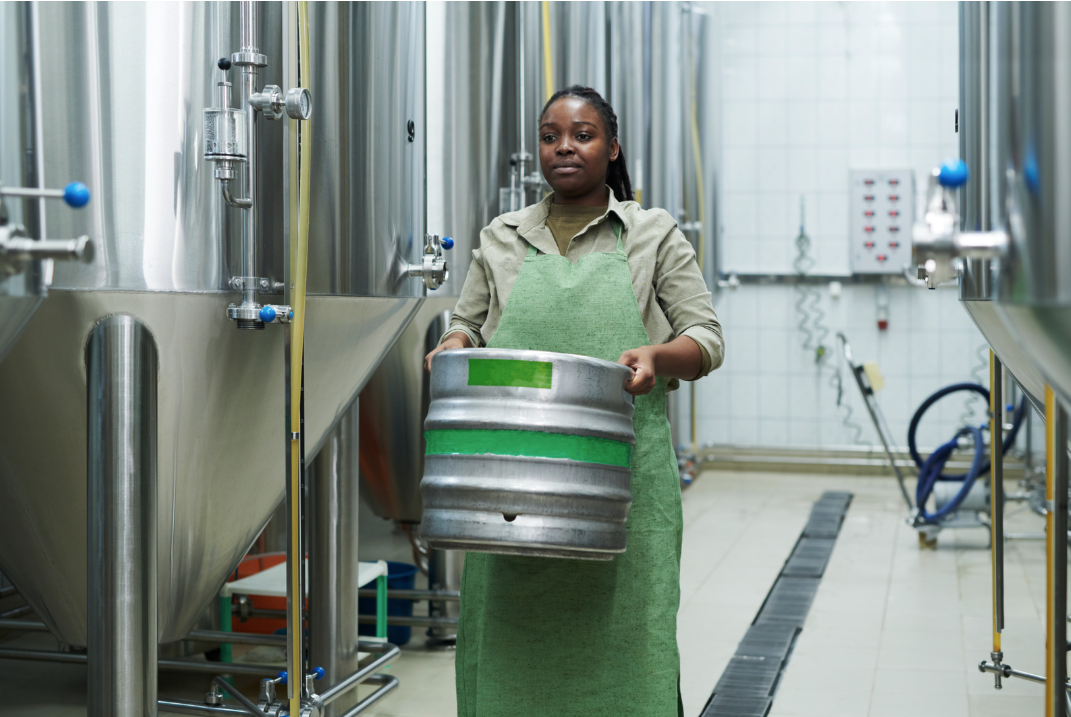Kegging beer into cornelius (corny) kegs is great - much less mucking around compared to bottling, but once your beer has finished fermenting and transferred to a keg, you will need to carbonate it to get the required amount of "fizz" into your beer.
In this post, we'll be looking into force carbonation and the different methods you can use to get your finished beer carbonated in a keg.
What is Force Carbonation?
Force carbonation is the process of infusing carbon dioxide gas (CO2) directly into your beer from a gas cylinder, bypassing the traditional method of bottle conditioning with priming sugar and residual yeast left in the beer. This technique significantly reduces the time it takes to carbonate your beer, allowing you to enjoy your finished beer in just a matter of hours or days instead of needing to wait weeks for the aforementioned bottle conditioning to complete.
Why Force Carbonate?
- Speed: Get your beer ready to drink much faster.
- Control: Achieve precise carbonation levels.
- Consistency: Avoid the variability that can come with bottle conditioning.
Methods of Force Carbonation
There are three main methods to force carbonate your keg, each with its own pros and cons. Let's break them down:
Note that there are a large number of variables that can affect how these processes work - such as beer temperature, any CO2 that's already present because of pressure fermentation etc.
1. Rapid Force Carbonating (Fastest)
This is the fastest method, but be warned; it can lead to over-carbonation if you do it for too long, or at too high a pressure. Like most things in home brewing - a bit of trial and error is required.
Steps:
- Ensure the temperature of the beer in your keg is at serving temperature - typically around 4°C - the colder the beer, the more readily it will absorb the CO2 gas.
- Set the pressure on your CO2 regulator to 30 psi.
- Connect the gas disconnect from your CO2 regular to the Gas/In post on your keg.
- With the gas still connected, turn the keg onto it's side and begin rolling it back and forth on the ground.
Tip: Put a towel under the keg to stop it from scratching if you're on a hard/concrete floor. - You should hear the gas hissing as it passes through the regulator and into the beer. Moving the liquid within the keg by rolling/shaking it helps to increase the surface area of beer that is contact with the gas which helps it to absorb faster.
- Continue rolling/shaking the keg for 1 minute then stop and place the keg upright on the ground.
- Leave the keg for 15 minutes to settle.
- Reduce the pressure in the keg to server level (~10-12 psi) then test pouring a beer to check the carbonation level.
- Repeat steps 3-6 until you've got the carbonation at the level you desire. Adjust the time you shake/roll the keg for (Step 5) once you start getting close (go for less than a minute to avoid over-carbonating)
- Once you've reached the desired carbonation level, vent the excess pressure in the keg using the pressure release valve (PRV) then set to serving pressure - typically 10-12 psi
2. 24 Hour Force Carbonating
- Ensure the temperature of the beer in your keg is at serving temperature - typically around 4°C - the colder the beer, the more readily it will absorb the CO2 gas.
- Set the pressure on your CO2 regulator to 30 psi.
- Connect the gas disconnect from your CO2 regulator to the Gas/In post on your keg.
- Leave the gas connected at 30 psi for 24 hours.
- After 24 hours, vent the excess pressure in the keg using the pressure release valve (PRV) then set to serving pressure - typically 10-12 psi.
- Pour a test beer and check the carbonation level. You can leave at serving pressure if further carbonation is required, or otherwise boost to 30psi for another short period of time then test again.
3. Set & Forget (Serving Pressure Carbonation)
- Ensure the temperature of the beer in your keg is at serving temperature - typically around 4°C - the colder the beer, the more readily it will absorb the CO2 gas.
- Set the pressure on your CO2 regulator to serving pressure, usually around 10-12 psi.
- Connect the gas disconnect from your CO2 regulator to the Gas/In post on your keg.
- Leave the gas connected for 5-7 days then try pouring a beer to check the carbonation level.
Tips for Successful Force Carbonation
- Purge Oxygen: Always purge your kegs and beer lines of oxygen before carbonating to prevent oxidation and stale beer.
- Chill Your Beer: Cold beer absorbs CO2 more efficiently, so make sure your keg is chilled before starting the carbonation process.
- Monitor Pressure: Use a spray bottle with a Star San solution to check for leaks to avoid wasting CO2 gas and delays in getting your beer carbonated.
Conclusion
Force carbonation is a fantastic technique for homebrewers looking to enjoy their beer faster and with more control over the final product.
We typically go for the "Set & Forget" method, because in our experience beer needs at least a week or two in the keg to condition and for the flavours to develop properly, so we use this time to carbonate at serving pressure and don't tend to drink too much of a beer while it's still relatively young.
If you are in a hurry though, the other two options we've outlined above can get your beer ready to drink at a much faster rate, but be wary of over carbonating.

.png)





No comments:
Post a Comment